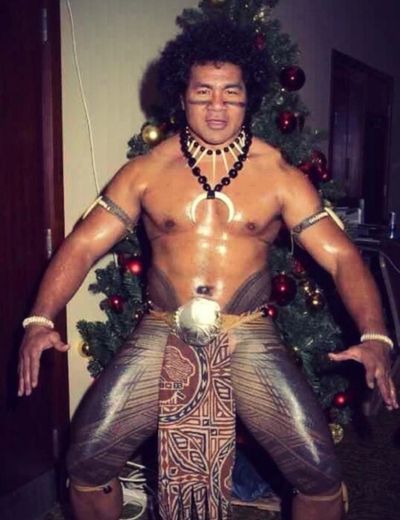THE SAMOAN ISLANDS & CULTURE

The Samoan Islands are an archipelago covering 3,030 km2 (1,170 sq mi) in the central South Pacific, forming part of Polynesia and the wider region of Oceania.
Administratively, the archipelago comprises all of the Independent State of Samoa and most of American Samoa (apart from Swains Island, which is geographically part of the Tokelau Islands). The nearest land masses of the two Samoan jurisdictions are separated by 64 km (40 mi) of ocean.
The population of the Samoan Islands is approximately 250,000, sharing the common Samoan language, a culture known as fa'a Samoa, and an indigenous form of governance called fa'amatai. Most Samoans have solely Samoan ancestry, and are one of the largest Polynesian populations in the world.
The oldest evidence of human activity in the Samoan Islands dates to around 1050 BCE. This comes from a Lapita site at Mulifanua wharf on Upoluisland. In 1768, the eastern islands were visited by French explorer Bougainville, who named them the Navigator Islands, a name used by missionaries until about 1845 and in official European dispatches until about 1870.
FALES
There are approximately 360 villages found all over the Samoan islands, with around 18,000 matai's. The traditional houses or fale are founded on openness, with the design reflecting the welcoming culture of the Samoan people. Fales are traditionally circular in shape, with no walls and a domed roof.
The fales are very simple in structure and coconut-leaf blinds can be lowered to protect from rain and wind. Up to 20 people from the same aiga will sleep in the same fale at a time.

'AVA CEREMONY

The 'Ava ceremony is a traditional practice that has been passed down in Samoan over many generations. Similar to those traditions found in Fiji, the 'ava drink is made from the ground root of a pepper plant and is traditionally consumed at important meetings and government.
Led by the high chief of the hosting village, participants will sit cross legged in a circle to prepare and consume the 'ava, and then enjoy a traditional feast.
TATAU
The traditional Samoan tattoo is called a Tatau or Malofie. The Tatau takes ten to twelve days, beginning at the waist and covers just every bit of skin, right down to the knees. It is done freehand in the traditional method using a sharks tooth and rubbing the ink into the wound.
The artwork and designs go beyond skin deep, there is history and meanings behind them. The tattoo and designs of the Samoan islands represents community, power, status, respect, honor, love, service and is a mark of pride that is only to be worn by Samoan men.

SAMOA FIRE DANCE

Song and dance are an integral part of Samoan culture. The traditional dance is called the siva which is performed by women and involves graceful, fluid movements and inspiring storytelling. The fa'ataupati is a dance traditionally performed by men and involves fire, knives and beating drums, These amazing performances are a very popular tourist attraction and a must-see spectacle while in Samoa.
Copyright © 2021 Tuilagi Rugby Academy - All Rights Reserved.
A Hudson Sports Complex Product

BIG NEWS
England National Team coach Eddie Jones will join our 2021 Summer Camp and pass on his knowledge.
Thank you Eddie!!!